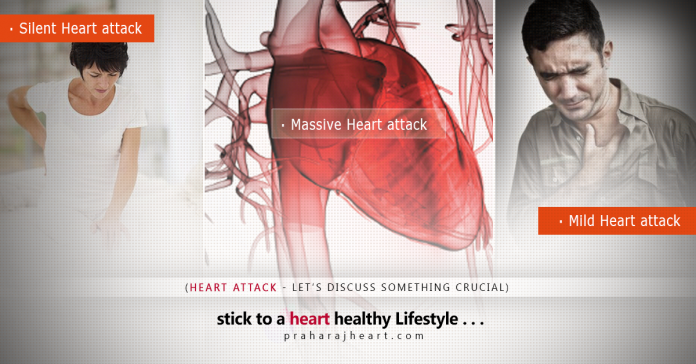Coronary failures represent a genuine wellbeing chance and can be hazardous. They happen when a blockage in the coronary conduits disturbs blood stream to the heart, which can cause super durable harm.
Three kinds of coronary corridor infection can prompt a cardiovascular failure. These are:
ST fragment height myocardial dead tissue (STEMI)
non-ST fragment height myocardial dead tissue (NSTEMI)
coronary corridor fit
In this article, we depict these three sorts of sickness, their danger elements, and how they are dealt with.
What is a heart attack?
The coronary courses convey blood to the heart, permitting it to work. A respiratory failure, otherwise called a myocardial localized necrosis, happens when a blockage creates in the coronary conduits and confines the progression of blood to the heart.
Blockages happen when fat, cholesterol, and different substances develop, framing stores called plaques in veins. These plaques can become harmed over the long run and may deliver platelets.
Platelets can make the blood coagulation. They might gather around a plaque, ultimately obstructing blood stream.
By limiting blood stream, these blockages can harm the heart muscle. The seriousness of harm will rely upon the size of the blockage. At the point when blood isn’t arriving at a huge fragment of the heart, the harm will be more broad.
A heart failure is frequently mislabelled as a coronary episode. Be that as it may, a heart failure happens when the heart unexpectedly quits working.
A heart attack results from one of the following types of coronary artery disease:
STEMI
A STEMI heart attack is severe and requires immediate attention.
These attacks occur when the coronary artery is fully blocked, preventing blood from reaching a large area of the heart. This causes progressive damage to the heart muscle, which can eventually stop it from functioning.
NSTEMI
NSTEMI heart attacks occur when the coronary artery is partially blocked and blood flow is severely restricted. While they are less dangerous than STEMI heart attacks, they can cause permanent damage.
Coronary artery spasm
These spasms are also called silent heart attacks or unstable angina. They occur when the arteries connected to the heart contract, preventing or restricting blood flow to the heart.
Symptoms do not cause permanent damage, and they are less severe than those of other types of coronary artery disease.
It is possible to mistake a coronary artery spasm for a minor condition, such as indigestion. However, having a coronary artery spasm can increase the risk of having a more severe heart attack.
Treatment

Regardless of the cause, all heart attacks require immediate medical attention. The treatment used will depend on the type of coronary artery disease.
In most cases, medical professionals will administer immediate treatment before determining the type or severity of the attack. This treatment may involve:
- aspirin to reduce further blood clotting
- oxygen therapy
- nitroglycerin to support blood flow
- efforts to reduce chest pain
Once a doctor has determined the type of heart attack, more treatment is needed to stimulate blood flow. When the underlying coronary artery disease is less severe, this can be done using medication.
- Clot busters, also known as thrombolytic medicines, help dissolve the blood clots that are cause any blockages.
- Blood thinners, also known as anticoagulants, prevent further clotting.
- Blood pressure medications, such as ACE inhibitors, help maintain healthy blood flow and reduce pressure.
- Statins can lower low-density lipoprotein cholesterol.
- Beta-blockers can reduce the heart’s workload and chest pain.
Doctors may also perform a percutaneous coronary intervention. This involves inserting a thin tube, or catheter, into the narrowed or blocked coronary artery. The end of the tube is inflated, creating more space in the artery, so that more blood can reach the heart.
In some cases, a stent will also be inserted during the procedure. This small metal device is designed to prevent future blockages.
Surgery may be necessary in severe cases. The most common type is a coronary artery bypass, which involves moving a blood vessel from elsewhere in the body to the blocked artery. The added vessel will allow blood to flow around the blockage and reach the heart.
Recovery
Recovery can vary significantly, depending on the type of heart attack, its severity, and how it was treated.
A person can often return to normal activities within a week. However, when the underlying coronary artery disease was more severe, it may take months to recover from a heart attack.
Following any kind of heart attack, a doctor will often recommend cardiac rehabilitation, which can teach a person to maintain a healthful lifestyle and minimise the risk of another attack. Changes to levels of physical activity and diet may be suggested.
Risk factors

Some people may be more vulnerable to heart attacks. Common risk factors include:
- high blood pressure
- obesity or being overweight
- a poor diet, particularly one high in trans or saturated fats
- low levels of physical activity
- smoking tobacco
- older age
- diabetes or high blood sugar levels
- a family history of heart disease
Prevention
A person can lower their risk of having a heart attack by:
- doing at least 150 minutes of moderate intensity aerobic exercise or 75 minutes of vigorous intensity aerobic exercise per week
- reducing stress
- not smoking
- eating a diet rich in vegetables, fruits, whole grains, legumes, nuts, and oily fish
- maintaining a healthy weight
Heart attacks are not always preventable because genetics is a factor. However, with simple lifestyle changes, a person can take significant steps toward reducing their risk.
































